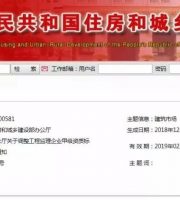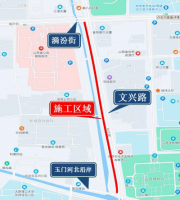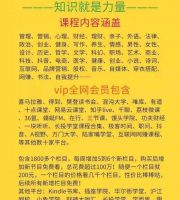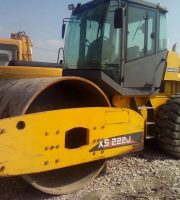1、 Prefabricated pier and abutment construction prefabricated pier and abutment is to divide the tall pier and abutment into several components along the vertical direction, according to a certain modulus and horizontally, pour them on the prefabrication site around the bridge site, transport them to the site by vehicles and ships, and lift and assemble them
.
The main characteristics of prefabricated pier and abutment are: it can be prefabricated in the Prefabrication Yard, and is less disturbed by the surrounding environment, but relatively speaking, it has higher requirements for transportation and lifting machinery and equipment
.
Prefabricated column pier system decomposes the pier into several components, such as bearing platform, column, capping beam (pier cap), etc., which are prefabricated in the factory or on site, and then transported to the site for assembly
.
Its construction process mainly includes prefabricated components, installation connection and concrete joint filling
.
The assembly joint is the key process, which should be firm, safe, simple and easy to construct
.
The commonly used assembly joints are as follows: (1) the bonded post tensioned prestressed tendon connection structure is often combined with mortar cushion or epoxy adhesive joint structure to realize the construction of segmental Precast Pier
.
The prestressed tendon in the scheme can use high-strength reinforcement such as steel strand or finish rolled rebar
.
The structure is characterized by prestressed tendon passing through the joint, more practical engineering applications, mature design theory, calculation analysis and construction technology experience
.
The disadvantage is that the cost of pier body is much higher than that of traditional cast-in-place concrete pier
.
At the same time, on-site construction requires tensioning and grouting of prestressed tendons
.
The construction process is complex and the construction time is long( 2) The grouting sleeve is used to connect the Precast Pier sections, and the steel bars are connected through the grouting sleeve
.
The mortar cushion is often used for the contact surface between the pier body and the capping beam or the bearing platform, and the epoxy adhesive joint structure is used between the pier body sections
.
The structural characteristics are high construction accuracy requirements, short construction time, and no need to tension prestressed tendons
.
The site workload is significantly reduced
.
Its mechanical properties under normal use conditions are similar to those of traditional cast-in-place concrete piers, so it has certain economic advantages
.
From the application experience of foreign countries, low seismic risk areas have been widely used, while the application and scientific research of high seismic risk areas are still in progress( 3) The connection structure is often used for the connection between pier body and cap or between pier body and cap
.
The prefabricated pier body connects the steel bars protruding from pier body through the grouting metal bellows embedded in cap or cap
.
The mortar cushion is often used on the contact surface between pier body and cap or cap, and the epoxy adhesive joint structure is used between pier body segments, as shown in Figure 5
.
The construction time of this structure is short, but the anchorage length of longitudinal reinforcement is enough, and its mechanical properties are similar to those of traditional cast-in-place concrete piers
.
At present, a small number of foreign bridges use this connection structure for construction, and it is rarely used in high seismic risk areas
.
Its seismic performance is still under study( 4) Slot type connection slot type connection structure as shown in Figure 6, has been applied in some bridge engineering, mainly used for the connection of pier body and bent cap, pile and bearing platform, compared with grouting sleeve, metal bellows, etc., the advantage is that the required construction tolerance can be larger, and a certain amount of concrete needs to be poured on site( 5) Welding or overlapping of steel bars and prefabrication with wet joint are adopted for assembling bridge piers
.
A certain amount of steel bars are extended in advance to overlap with the reserved steel bars of adjacent components
.
Temporary support is required, and the connection parts of steel bars need to be connected by post pouring concrete (wet joint)
.
This is also the design idea of segmental assembling bridge piers which is widely used in China at present
.
The mechanical properties of piers constructed with this structure are often similar to those of traditional cast-in-place concrete piers, but the existence of wet joints will increase the construction time and the amount of on-site steel overlapping and pouring work
.
From the perspective of rapid construction, this scheme has some shortcomings( 6) Socket connection socket joint connection structure is to insert the precast pier body into the corresponding reserved hole of the foundation, the insertion length is generally 1.2-1.5 times of the pier body section size, the bottom is paved with a certain thickness of mortar, and the surrounding is filled with semi-rigid concrete
.
The advantages are simple construction process and less on-site operation; However, the mechanical behavior of joints, especially the seismic performance, needs further study
.
Jishuitan bridge in Beijing is constructed with this connection structure in China, and some bridges in the United States are also constructed with this connection structure
.
As shown in the figure
.
The seismic performance of precast column is a technical problem that hinders the application of full precast assembly technology in bridges in high seismic risk areas
.
In order to realize the comprehensive promotion and application of full precast assembly technology, it is necessary to carry out in-depth research on the seismic performance of precast column
.
Based on the typical bridge pier structure of practical engineering, three precast connection modes of sleeve, duct and bonded prestressed tendon are selected to carry out the scale test research of rectangular solid segmental precast column under low cycle repeated horizontal loading
.
Through the quasi-static test and finite element numerical analysis of precast column specimens under different construction details, The hysteretic characteristics, ductile deformation, nonlinear mechanical behavior at joints, damage and failure mechanism of segmental precast columns under different construction modes are studied
.
The test results show that, compared with the traditional cast-in-place concrete pier, the pier with sleeve and duct prefabricated connection structure has similar seismic performance, which can meet the requirements of the expected seismic performance
.
The deformation capacity of Precast Pier with bonded prestressed tendons is similar to that of cast-in-place concrete pier, but the energy dissipation capacity is weak
.
In addition, through calculation and analysis, connection device test, and Research on the production and transportation process of the whole batch of specimens, it shows that the overall stress, structural connection, seismic performance and the whole construction process of the column can meet the requirements of the current design and construction, and can be used in Engineering practice
.
Application examples: the following points should be paid attention to in the construction of prefabricated column pier and abutment: (1) the column components of pier and abutment and the reserved rod base on the top of foundation should be numbered, and the height of each pier and abutment and the coordinate height of foundation should be checked to see if they meet the design requirements; The gap between the base opening and the column edge shall not be less than 2cm( 2) When the pier and abutment column is hoisted into the base cup, it should be measured in the longitudinal and transverse directions to make the verticality or inclination of the column body and the plane position meet the design requirements; For heavy and slender pier, the hook can be put only after it is fixed with wind cable or brace( 3) Before installing the capping beam on the top of the pier and abutment column, check whether the position of the reserved slot on the capping beam meets the design requirements, otherwise it should be chiseled first( 3) After the column body and capping beam (pier cap) are installed and checked to meet the requirements, the thin mortar can be poured at the gap between the base cup and the groove of capping beam
.
After the hardening, the wedge, support or wind cable shall be removed, and then the mortar shall be poured in the wedge hole
.
With the maturity and development of prestressing technology, prestressing has been applied to piers and abutments, especially the post tensioned precast reinforced concrete piers and abutments
.
Its construction method is similar to that of prefabricated column pier
.
In addition to the joint treatment technology during installation, the connection mode between precast members mainly depends on prestressed steel tendons
.
There are mainly two kinds of prestressed steel used in post tensioned precast reinforced concrete piers and abutments: high strength and low relaxation steel wire and cold drawn grade IV coarse steel bar
.
There are two ways to tension the post tensioned precast reinforced concrete pier and abutment: the tension position can be on the top of pier cap; It can also be tensioned at the bottom of the pier
.
Generally, it is tensioned on the top of pier cap.
.





